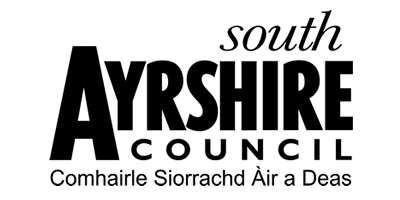On the first day of 1792 the Ayr lawyer and banker Thomas McClelland began keeping a diary. Shipping movements would figure prominently, and in his first diary entry, McClelland described the wreck of the smuggling cutter Lord Charles at Ayr. He then gave a detailed account of her career.

‘This has been a remarkably unlucky vessel’ wrote McClelland of the Lord Charles, and he went on to catalogue the misfortunes which befell those most closely associated with her. According to his information, she had been built at Dublin for the Irish Revenue Service, and her first captain had shot himself aboard her in Dublin Bay. ‘She was afterwards sold’ he wrote ‘and purchased by William Brackenridge in Dowhill for the smuggling service’.

William Brackenridge was the tenant of Dowhill Farm, on the coast north of Girvan. He was also the head of the Ladyburn Company, which carried on a little legitimate trade as a front for its extensive smuggling activity. It was based in the hamlet at Ladyburn Mill, near the mouth of the Lady Burn which flows into the sea just south of Dowhill. The Brackenridge family and their associates had arranged for cargoes of smuggled tobacco, tea, rum and brandy brought from overseas ports – especially Guernsey in the Channel Islands – to be unloaded and concealed at the sheltered anchorages of Red Bay, on the Antrim coast of northern Ireland, and Sanda Island off the Mull of Kintyre. The goods were then brought over to Ayrshire’s exposed Carrick coast in large open boats.

In 1789 the Lord Charles made her first trip in Brackenridge’s service, to Guernsey. On 12 November that year a customs spy reported no less than 14 smuggling vessels lying loaded at Guernsey awaiting the first fair wind to sail for Ireland and Scotland. According to this report, which reached the Board of Customs in Edinburgh in December, these included Captain Craig’s for Ladyburn or Ballantrae, and Captain Taylor’s and Captain Neil’s for Red Bay and Rathlin in Ireland and Sanda in Scotland. The entry in the Board’s records has the added comment ‘It appears that Taylor’s vessel is arrived and has been seized’. Taylor’s vessel was the Lord Charles, and Thomas McClelland takes up her story: ‘Captain James Dowie of the revenue cutter Prince Augustus Frederick, stationed here, (Ayr) fell in with and seized her fully loaded at Red Bay after shooting Captain Taylor and his mate both dead on deck.’
Captain Dowie does not appear to have been a particularly ruthless individual – there are many testimonies to his decency and humanity, and it is likely to have been violent resistance on the part of Captain Taylor and his mate which cost them their lives.
The captured Lord Charles was in due course put up for sale, but her smuggling career was not over. No doubt through the agency of a middle-man or middle-men, she passed once more into the ownership of William Brackenridge. Thomas McClelland gives a detailed account of her activities in 1791, the year in which both she and William Brackenridge would go to a watery grave, and all this will be related in the next and final instalment.
